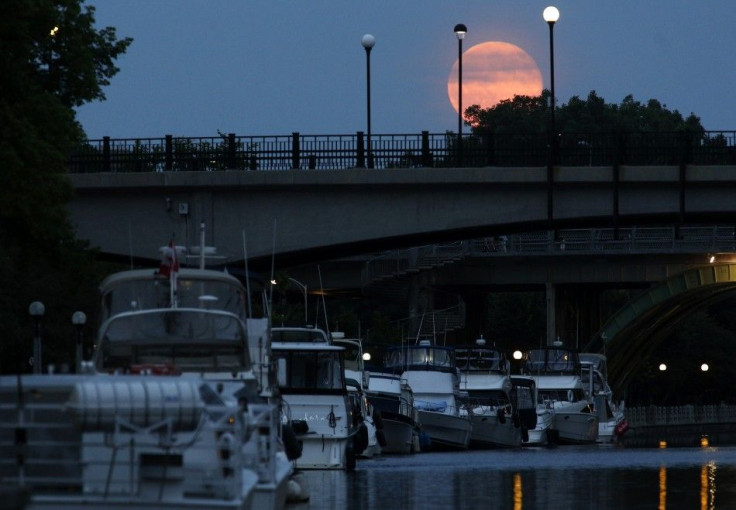2015 Supermoon total lunar eclipse: Where to watch rare eclipse online

Spectators all over America, Europe, Africa, western Asia and eastern Pacific Ocean area have observed the supermoon total lunar eclipse. Australia may have missed out on the rare astronomical phenomenon but the interested spectators can still experience the event online.
Space.com reports that the supermoon eclipse can be observed through the Slooh Community Observatory webcast. The Slooh broadcast, which kicked off at 8 p.m. EDT, includes observation of the supermoon eclipse from three different countries, a stream of the eclipse rising over Stonehenge in England and an expert commentary.
Observers can also watch the supermoon total lunar eclipse webcast on Space.com courtesy of Slooh. NASA (National Aeronautics and Space Administration) officials stated in a released video that the supermoon total lunar eclipse this 2015 is the first supermoon eclipse in over three decades and the last supermoon eclipse until 2033.
“There's no physical difference in the Moon. It just appears slightly bigger in the sky,” planetary geologist Noah Petro, a planetary geologist from NASA's Goddard Space Flight Centre in the U.S., explained in an abc.net.au report. The supermoon total lunar eclipse, also called a “blood moon,” is one that emerges bigger and brighter than its usual form as it reaches the point in its orbit that is closest to Earth.
The Earth’s shadow has covered the full moon for over an hour as the planet passed by between the Sun and the Moon. The Moon’s bright white glow gradually changed into a dim red due to the scattered sunlight of the Earth’s atmosphere into the shadow.
During the supermoon total lunar eclipse, NASA’s solar-powered Lunar Reconnaissance Orbiter has traveled into the Earth’s shadow to make the spacecraft one of the few that can prevail over temperature drop and lack of sunlight. The Guardian reports that the totality ends until about 12:23 a.m. on Monday, where the moon’s leading edge leaves the umbral shadow to come into the penumbral shadow to create another partial eclipse.
Then, the moon slides through the penumbral shadow and eventually leaves the shadow at approximately 1:55 a.m. which indicates that the lunar eclipse is over. The next total lunar eclipse will take place in January 2018 while the next supermoon total lunar eclipse will not occur until 2033.
Contact the writer at feedback@ibtimes.com.au, or let us know what you think below.




















